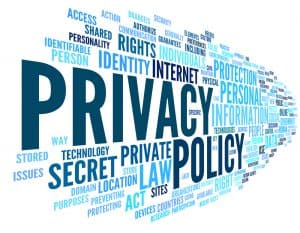
The governing regulations over the use of data and who has access to it will change the landscape of how we move about in the online world.
Over the past decade, data has emerged as “the new oil” – a driving force behind the world’s economy. Because of the sheer amount of data, new concerns for its use have driven innovation within the privacy and security sphere. In the coming months and years, privacy will reemerge as the latest innovation-driving force, producing long term changes from trends happening now.
Let’s take a look at how some of these situations will shape what we understand of privacy and how it appears in industry use cases.
See also: Blockchain Intelligence (AI) in Value Chains
AIoT and Increased Regulation
Widespread consensus with artificial intelligence is that people still don’t trust AI. However, AI-driven IoT is disrupting legacy systems and driving tremendous innovation. Progressive company leaders understand the power of AI, and some of the biggest names in tech are buying up startups promising to deliver results.
Intel recently announced a buyout of Habana Systems just after acquiring Nervana and Movidius. Apple is following suit with similar buyouts of startups specializing in facial recognition and security. Google also has a string of buyouts under its belt. Companies are recognizing the convergence of AI and IoT.
Some of the best implementations of IoT are actually AIoT, and security is at the forefront of everything the industry is doing now. New regulations in California, for instance, will govern how the data from IoT devices (and other data sources) can be used, giving consumers more power over transparency and data usage.
Concerns about national security have also prompted new regulations about the export of AI to countries considered a risk. While these latest regulations hit geolocation-driven software almost exclusively, there are still talks about expanded efforts to keep AI-powered software within the borders of the US.
In the Smart Systems world, AI-powered initiatives have no precedent, sending lawmakers and companies scrambling for logical regulations to protect consumers and ensure companies can enact digital transformation without opening the network up to targeted attacks. Two current challenges from IIC and TIoTA aim to address these security concerns within Smart Buildings and Smart Logistics.
5G Adoption and the Secure By Design Approach
The number of devices coming onto the IoT network through older, legacy networks is decreasing. As 5G continues to roll out, it provides the best possible connection for the sheer volume of devices on the network. This spells trouble, however, as it’s also currently the least secure option.
Issues with 5G security began in force back in 2016, and while device makers can’t stop the roll-out, they are looking towards security for the future. Device makers could shift to designing privacy/security-first applications instead of focusing on the product first with security after.
Companies are catching on. In the race to build IoT, several devices have hit the market in the past with a heavy focus on theoretical design and little on scalability and maintenance. Now, the mindset shift to secure by design means companies are prioritizing writing security and privacy into the software from the beginning, building scalable solutions with accessible updates.
This subtle shift could help alleviate concerns that 5G will create a vast, interconnected system ripe for attack. The current IoT landscape is fragmented in the comprehensive view, but 5G could bring unified connections and a greater chance for hackers to find a back door. Greater focus on inbuilt security and secure interoperability could help ensure that private data remains secure.
Personalization and Blockchain Investment
The driving force behind personalization is a profoundly intimate understanding of our data, driven by artificial intelligence and big data. While personalization isn’t a direct link to blockchain adoption, the rise of blockchain to address security is a healthy counterfoil to the centralized big data behind personalization.
Blockchain is a decentralized software network that provides a way for companies to verify information and transactions in the midst of ever centralizing data. Fraud and identity theft are on the rise as companies collect increasing amounts of information about us, allowing hackers to complete our “columns” and gain access to our online lives.
Blockchain is an immutable file, and in places like smart homes (and commercially, smart buildings), blockchain could help solve some of these issues. The increasing connection of our devices to our data to our online accounts – everything from our bank to our thermostat to our party supply store – could cost us billions annually in losses from fraud and theft. Blockchain could finally prove to be a real-world use case to verify who we are among the noise and allow us to unlock the full potential of personalization.
Our increasing reliance on personalization to facilitate day to day operations, both business and personal, will provide the initial testing ground for real-world blockchain use cases. In industries like Finance and FinTech or Manufacturing, for example, blockchain could help seal loopholes and verify identities and protocols.
End-to-End Encryption — Privacy Versus Security
The end-to-end encryption debate is still raging, pitting our idealistic privacy concerns against national security goals. Whether companies give in to providing law enforcement a back door to our personal data or privacy will prevail is a matter of debate.
For many experts, the concept of banning end-to-end encryption is ludicrous, given that encryption is simply complex math. However, as IoT continues to provide better, more detailed big data about people both domestic and abroad, the debate about where the line is between our right to privacy and our need for safety will continue.
For now, lawmakers are working on aspects of end-to-end legislation that could provide “ghost users.” Similar to the way wiretapping works, these capabilities will enable law enforcement and the government to access our communications and data without us ever knowing to crack down on criminal activity.
We know that our right to be invisible has changed with the advancement of the internet, but how and when our private online interactions are used continues to evolve. This precedent will be the next frontier in the privacy debate, and the deciding regulations and legislation will have far-reaching effects.
The Evolution of Privacy
As we continue to intertwine our online lives with that of the physical world, our understanding of privacy will evolve. There are currently few precedents set for a 5G, AI-enabled, and personalized IoT world, but we will see some significant changes and decisive actions in the next decade.
Just as big data changed our perspective in the previous decade, the governing regulations over the use of our data and — even more importantly — who has access to that data with or without our consent will change the landscape of how we move about in the online world.







